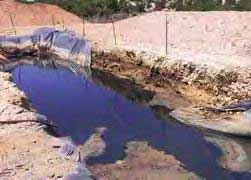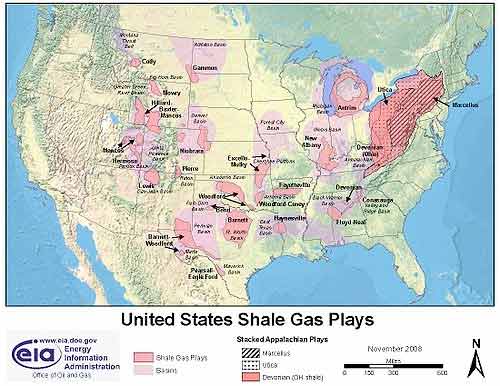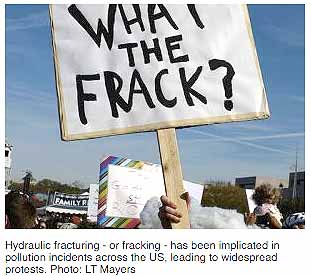Contains the keyword background
The mining of hardrock minerals — gold, uranium and other metals — on public lands in the West is governed today by the 1872 Mining Act. It has changed little since President Ulysses S. Grant signed it into law to encourage settlement of the West.
This 1872 law — on the books before the light bulb was invented — often gives metal mining special priority over recreation, ranching and conservation. It allows mining companies — even those that are foreign-owned — to take precious resources from public lands virtually for free, yet the oil, gas and coal industries have been paying royalties since the 1920s. And in what is arguably one of the great corporate giveaways of all time, claimholders can purchase public land at the rock-bottom price of $5 an acre or less. They do not even have to mine the property, but can use it — and have — to build hotels, condominiums and casinos.
Failure to reform this antiquated statute has proven costly to Americans. Mining is a messy business. The Environmental Protection Agency estimates that metal mining has contaminated more than 40 percent of western watersheds. Nearly half a million mine sites await reclamation, and the projected cost to taxpayers for cleaning up the pollution runs upwards of $50 billion.
A new rush of mining claims in the West is about to make the problem worse. A recent analysis of government records found a dramatic surge in claims, including hundreds of sites within miles of the Grand Canyon and other notable national parks such as Joshua Tree and Yosemite.
Modern mining needs a modern law. The Pew Environment Group’s Campaign for Responsible Mining is a national effort, launched in 2006, to take advantage of a unique opportunity in Congress to reform the 1872 Mining Act. The simple goal of this campaign is to encourage the adoption of a new framework for mining that compensates taxpayers, respects local communities and protects the environment.
See: Patrick Reis. NYT. Oct. 6, 2010. "W.Va. Sues Obama, EPA Over Mining Coal Regulations."
See also:
Wiseman, Hannah J. “Untested Waters: The Rise of Hydraulic Fracturing in Oil and Gas Production and the Need to Revisit Regulation.” Fordham Environmental Law Review 20 (2009): 115-170.
Horwitt, Dusty. "Drilling Around the Law: Drinking Water Threatened by Toxic Natural Gas and Oil Drilling Chemicals". Environmental Working Group, 2009.
Fracking will require the storage of frack wastewater in pits.
There are many fluids and wastes associated with oil and gas operations that can poison living organisms. This web page contains information on some of the following issues of concern related to the storage and disposal of oil and gas wastes:
- How pit pollution occurs
- Soil and water contamination from pits
- Wildlife and livestock mortality related to pits
- Toxic materials stored and disposed of in pits

Shale gas in the United States is rapidly increasing as a source of natural gas. Led by new applications of hydraulic fracturing technology and horizontal drilling, development of new sources of shale gas has offset declines in production from conventional gas reservoirs, and has led to major increases in reserves of US natural gas.
Please note that information taken from Wikipedia should be verified using other, more reliable sources. It is a good place to start research, but because anyone can edit Wikipedia, we do not recommend using it in research papers or to obtain highly reliable information.
This is an excellent background on the Marcellus Shale Gas Rush. Website is sponsored by Shell which may signify a pro-industry editorialization. Nevertheless, the photographs and production are impressive. Shell's message here:
"Let's Build a Better Energy Future. Let's Go. See how we're helping to secure energy for the next generation."
See: Ed Pilkington. "Shell pays out $15.5m over Saro-Wiwa killing." The Guardian. June 9, 2009.
See: Jad Mouawad. "Shell to Pay $15.5 Million to Settle Nigerian Case." NYT. June 8, 2009.
Forcing Gas Out of Rock With Water
The populous mid-Atlantic market pays a relatively higher price than the South for energy, at the same time that exploration and finding costs are dramatically lower in the Marcellus than in the Barnett and the other shales around the United States.
“It’s very repeatable,” says Range spokesman Matt Pitzarella. “Every well in Washington County is either good or great.”
See: Candice O'Grady. "Newsweek Greenwashes the Oil Lobby for Real." Feb. 2010.
U.S. Energy Information Administration (EIA) Energy Kids Website. Nonrenewable Natural Gas.
The main ingredient in natural gas is methane, a gas (or compound) composed of one carbon atom and four hydrogen atoms. Millions of years ago, the remains of plants and animals (diatoms) decayed and built up in thick layers. This decayed matter from plants and animals is called organic material — it was once alive. Over time, the sand and silt changed to rock, covered the organic material, and trapped it beneath the rock. Pressure and heat changed some of this organic material into coal, some into oil (petroleum), and some into natural gas — tiny bubbles of odorless gas.
Burning natural gas produces carbon dioxide which is a greenhouse gas. Greenhouse gases contribute to the "greenhouse effect."
Scientists know with virtual certainty that increasing greenhouse gas concentrations tend to warm the planet, according to the U.S. Environmental Protection Agency, Climate Change State of Knowledge.
As with other fuels, natural gas also affects the environment when it is produced, stored, and transported. Because natural gas is made up mostly of methane (another greenhouse gas), small amounts of methane can sometimes leak into the atmosphere from wells, storage tanks, and pipelines.
Question and Answer period starts at 52:00. See: Potential Gas Committee reports unprecedented increase in magnitude of U.S. natural gas resource base.
(January 20, 2010) John Curtis, Professor of Geochemistry and Director of the Potential Gas Agency at the Colorado School of Mines, discusses a broad range of perspectives on the state of U.S. shale gas reserves and resources along with the industries and technologies that are involved in extracting and bringing these energy resources to market.
The gas stored in the Marcellus Shale formation is the subject of desperate drilling to secure US domestic energy supplies. But the process involved - hydraulic fracturing - is the focus of a bitter dispute over environmental damage and community rights.
It is a timeless patchwork of small dairy farms and endless hills, emblazoned with the blood-red tints of an autumnal Pennsylvania forest. Set against this sleepy backdrop, however, the constant convoys of water trucks rumbling along the deserted country roads suggest something profound is taking place. This is ‘fracking’ country, the latest frontier in America’s desperate search for fossil fuels.
Pioneered by companies such as Halliburton, high-volume horizontal slickwater fracturing – otherwise known as hydraulic fracturing, or simply fracking – involves the drilling of horizontal wells that are then injected with large volumes of water, sand and chemicals at high pressure to open up rock fractures and help propel rock-trapped gas back to the surface.
Professor Anthony Ingrafea, one of the world's leading experts on fracture mechanics, based at Cornell University, told the Ecologist:
...there is an overriding urgency to slow down the fracking rush. 'I'm not anti-oil and gas. What I'm against is an industry that is so out of control in using a new technology that does not have proper regulation, and enforcement of regulation, that they're riding roughshod over a large segment of the population.'
 The Clean Water Act is the primary federal law in the United States governing water pollution. Commonly abbreviated as the CWA, the act established the goals of eliminating releases to water of high amounts of toxic substances, eliminating additional water pollution by 1985, and ensuring that surface waters would meet standards necessary for human sports and recreation by 1983.
The Clean Water Act is the primary federal law in the United States governing water pollution. Commonly abbreviated as the CWA, the act established the goals of eliminating releases to water of high amounts of toxic substances, eliminating additional water pollution by 1985, and ensuring that surface waters would meet standards necessary for human sports and recreation by 1983.
The principal body of law currently in effect is based on the Federal Water Pollution Control Amendments of 1972, which significantly expanded and strengthened earlier legislation. Major amendments were enacted in the Clean Water Act of 1977 and the Water Quality Act of 1987.
Please note that information taken from Wikipedia should be verified using other, more reliable sources. It is a good place to start research, but because anyone can edit Wikipedia, we do not recommend using it in research papers or to obtain highly reliable information.
Abrahm Lustgarten
Gas drilling companies such as Halliburton say the gas drilling technique known as hydraulic fracturing, or "fracking," is safe, but opponents contend it pollutes groundwater with dangerous substances. Now, new evidence has emerged possibly linking natural gas drilling to groundwater contamination.
ProPublica journalist Abrahm Lustgarten reports federal officials in Wyoming have found that at least three water wells contain chemicals used in hydraulic fracturing.
Abrahm Lustgarten is a former staff writer and contributor for Fortune, and has written for Salon, Esquire, the Washington Post and the New York Times since receiving his master's in journalism from Columbia University in 2003.
The Safe Drinking Water Act (SDWA 1974) is the principal federal law in the United States that ensures safe drinking water for the public. Pursuant to the act, the Environmental Protection Agency (EPA) is required to set standards for drinking water quality and oversee all states, localities, and water suppliers who implement these standards.
SDWA applies to every public water system in the United States. There are currently more than 160,000 public water systems providing water to almost all Americans at some time in their lives. The Act does not cover private wells.
In 1996, Congress amended the Safe Drinking Water Act amendments to emphasize sound science and risk-based standard setting, small water supply system flexibility and technical assistance, community-empowered source water assessment and protection, public right-to-know, and water system infrastructure assistance through a multi-billion-dollar state revolving loan fund. They were signed into law by President Bill Clinton on August 6, 1996.
See: Safe Drinking Water Act 101 | Online Training | Drinking Water Academy














